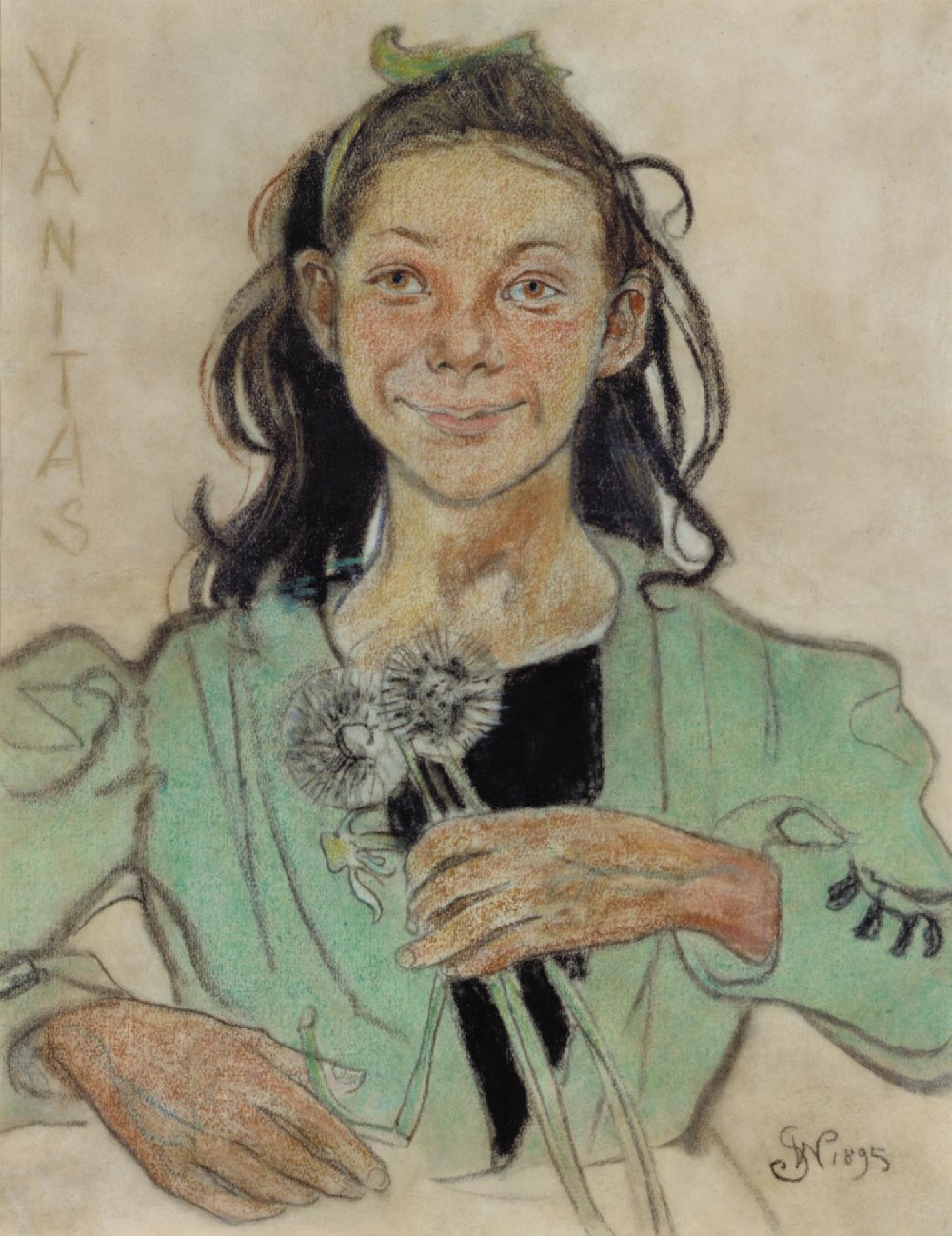Description:
Stanisław Wyspiański (1869-1907) followed in the footsteps of his father, a sculptor, starting his artistic path at the age of 15, studying at the Krakow School of Fine Arts, and then regularly attending classes taught by F. Cynk, I. Jabłoński, W. Łuszczkiewicz and J. Matejka. There he also became friends with such people as Lucjan Rydel and Józef Mehoffer, with whom he worked on the polychrome of the St Mary’s Church. Their paths often crossed, not only in social but also in creative areas. In 1892 they competed with each other in a competition for the curtain design for Słowacki Theatre in Krakow, and in 1893-4 for the stained glass design for the Lviv Cathedral. His hometown was represented with his name on the Franciscan Church and its decorative equipment with polychrome and colorful stained glass. He did not limit himself to these two areas.
Translation: Wyspiański was a man of many talents: he was renowned as a painter, sculptor, graphic designer, poet, architect, interior decorator, and set designer. He was one of the founders of the Polish Artists Society “Sztuka”, the artistic director of the magazine “Życie”, and a professor at the Academy of Fine Arts in Krakow. His family – his wife Teodora and his children: Helena, Mieczysław, and Stanisław – also became a source of inspiration, as they can be recognized in many of his works. Along with his friends, family members, and important personalities, there were also peasant children from the village, as evidenced by the painting below.
Description of the painting:
Wyspiański was a man of many talents: he was renowned as a painter, sculptor, graphic designer, poet, architect, interior decorator, and set designer. He was one of the founders of the Polish Artists Society “Sztuka”, the artistic director of the magazine “Życie”, and a professor at the Academy of Fine Arts in Krakow. His family – his wife Teodora and his children: Helena, Mieczysław, and Stanisław – also became a source of inspiration, as they can be recognized in many of his works. Along with his friends, family members, and important personalities, there were also peasant children from the village, as evidenced by the painting below.
The pose taken by the girl is clearly studied, as indicated by the raised arms with bent elbows at the height of the chest. In her left hand she holds three stalks – two of them end with dandelions, the other is broken and deprived of soft down. In this way, the title vanitas was presented, the idea of vanity and impermanence set against the youthful image of a child.
We usually find the children from Wyspiański’s portraits in natural positions: while playing, during a nap, in the embrace of their mother. They are authentic, and their grimaces and gestures become pretexts for a plastic record of their personality. The above work, done in pastel technique on paper, was originally a project of a fragment of polychrome for the Franciscan church in Krakow. Its theme was to refer to one of the allegories of virtues and vices – thoughtlessness. Hence, the deliberate placement of the symbol in the center of the composition field, whose connotation is reinforced by an additional inscription along the left edge of the work. Ultimately, as a result of changes in the idea of wall decoration of the temple, this cardboard began to function as an independent work and in 1897 was purchased by Edward Alexander Raczyński.


